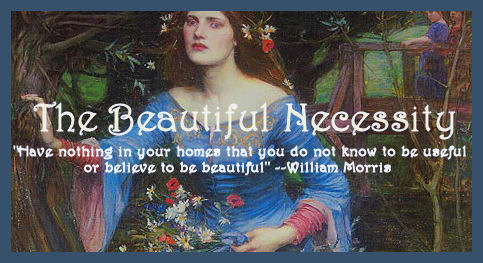
I really wholeheartedly enjoyed
Pale as the Dead, by Fiona Mountain, which is why I saved it for my last review. Incidentally, if anyone else knows of any recently written fiction that directly relates to the Pre-Raphaelites, I'd love to read more...sadly it seems to be a pretty slim selection.
Amazon's Synopsis:
Students of the Pre-Raphaelites, perhaps more than whodunit fans, will welcome British author Mountain's literate debut mystery introducing genealogist Natasha Blake. Still struggling with the scars caused by her belated discovery that she was adopted, the sympathetic Natasha finds herself venturing beyond her usual line of inquiry when Bethany Marshall, a young woman who had modeled for a series of art photographs, disappears. Suspecting that there may be a connection between Bethany and the Victorian model Lizzie Siddal, the suicidal wife of the painter Dante Gabriel Rossetti, Blake taps her network of researchers to test her theories. Her activities lead her into an ambiguous relationship with Adam Mason, Bethany's boyfriend, and possible peril from mysterious figures who follow her and break into her flat. She diligently pursues numerous trails, encountering a fair number of dead ends before hitting on a clue to Bethany's past that could provide evidence relevant to some suspicious sudden deaths.My opinion:
I thoroughly enjoyed this book! It was an enjoyable contrast to the somewhat heavy Pre-Raphaelite non-fiction I've read recently. It's as though the book was written expressly with kindred spirits to myself in mind...a main character my age, with pretty nice fashion sense, a gorgeous little cottage in a small English village (ok, have I mentioned that this is a lighthearted book with plot that may require you to suspend disbelief at times?), visits to Kelmscott and Lizzie Siddal's grave, and to the Tate to look at the artworks we know and love. And perhaps most enjoyable of all, a plot that involves a photographer working to recreate the "feel" of Pre-Raphaelite art in photography! Yeah...with all those things going for it, it would have been tough to ruin this book for me. But the author also brings in some interesting knowledge of the Pre-Raphaelites...mentioning things I didn't know, like the fact that apparently Rossetti summoned the doctor to his house a few
days after Lizzie died, frantically insistent that she was still alive, just in some sort of coma from her overdose. Mountain takes anecdotal stories like this and extrapolates from them to create a (ok, somewhat unbelievable but interesting) fictional storyline that revolves around the Pre-Raphaelites.
I really enjoyed this book, and definitely recommend it.
 and then later fantasizes about it coming to life:
and then later fantasizes about it coming to life: Later on, when she actually meets her beloved, she turns to a page in her journal:
Later on, when she actually meets her beloved, she turns to a page in her journal: And dreams of how it is now reality (my favorite scene!)
And dreams of how it is now reality (my favorite scene!)









